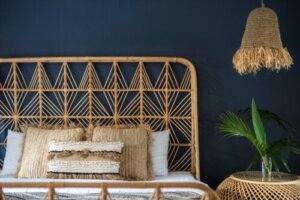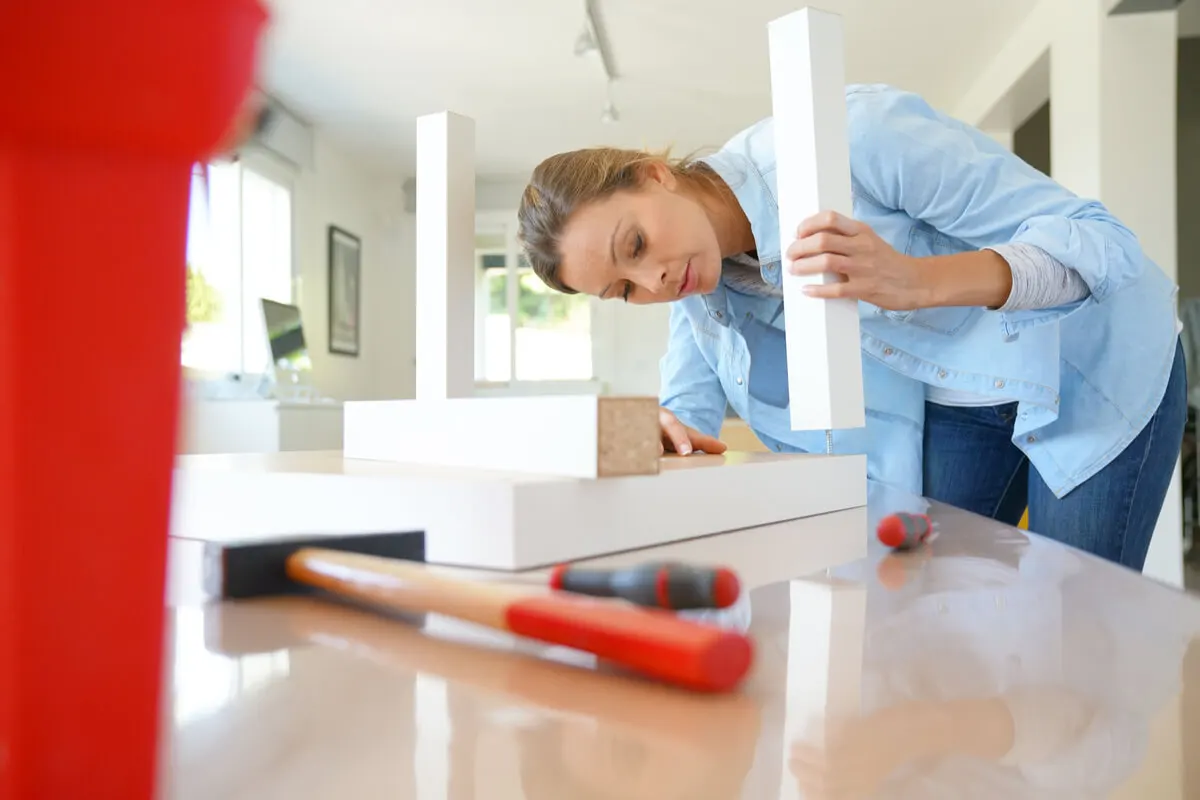Rattan Furniture: Advantages and Disadvantages

One of the main materials used in the manufacture of furniture is rattan. At first, this style was used for patios, gardens, and other outdoor areas of the house. However, rattan furniture is now becoming popular for inside the home.
The techniques used to cure natural rattan improve with time, but it’s quite common to use synthetic rattan as well. It offers a similar finish and lower environmental risks.
When should we choose natural rattan furniture and when is it fine to use the artificial type? Let’s find out by examining its benefits and drawbacks.
Rattan and its use in furniture making
The Rattan Species Profile states that the word “rattan” comes from the Malay word rotan and refers to the local climbing palms. They describe them as thorny palms suitable for industrialization, thanks to their most important product – the cane.
It’s this stem, separated from the leaves, that is used as the framework for different types of furniture, as well as basketry and matting. The rattan cane is uniform and strong, but, at the same time, it’s malleable.
Rattan furniture is similar, in some ways, to furniture made with solid wood; the variations are in the designs, and those made with rattan are more meticulously made. Besides, the wooden ones are more expensive.
Rattan furniture can be divided into 3 basic lines of design:
- Colonial: This combines the woven structure of the fiber with floral quilts.
- Ecological cut: In this type, only natural material is used to make the furniture.
- Ethnic: This complements the decoration with organic elements typical of a country, represented through tables, trunks, and native lamps, for example.

Advantages of rattan furniture
According to the International Journal of Forestry and Forest Industries (Unasylva), the solid and round characteristics of rattan canes are useful for creating the frame of the furniture, which isn’t the case with the hollow canes of plants such as bamboo.
Another advantage of rattan is that, being the main manufacturing component, you can also incorporate materials such as metal, glass, and plastic. This quality is conducive to the manufacture of tables and some types of shelves.
Another great article: 5 Ideas to Recycle Wood Furniture
Likewise, there are many shapes, colors and sizes of rattan furniture, with benefits such as the following:
They’re eco-friendly
While displaying beautiful furniture, you reduce the pollution produced during the manufacture of other kinds of furniture. This plant is fast-growing in the tropics, has high reproduction rates, and has a very low environmental impact.
In fact, there are some rattan plantations where the product will be used exclusively in the manufacture of tables, chairs, and shelves, to name a few.
Excellent durability
Apart from being aesthetically pleasing and comfortable, they’re durable and resistant. Other fibers, such as wicker, aren’t as firm as rattan.
Stable and safe
They’re lightweight items of furniture, which minimizes the likelihood of major accidents or hard knocks during transportation, which could happen with wooden furniture.
Suitable for indoors and outdoors
Rattan ages outdoors, and so it contains natural oils that help protect it from deterioration due to the elements, as well as reducing cracks and preventing stretching. However, inside the house, it’s simpler to care for them and they still look great.
Customization
Rattan fabrics can be customized, as can the upholstery, if applicable. It’s possible to select the fabric, the pattern, and the colors according to your taste. Changing the upholstery greatly transforms the look of a room.
Take a look at this great article: Five Ingredients to Remove Dust From Furniture
Disadvantages of rattan furniture
Rattan is traditional, and warm and retains its relevance in decoration. But it’s good to know certain disadvantages that could arise with it:
- Splinters: This isn’t too serious, but you could get a splinter from older and more neglected items of furniture.
- Risk of deterioration: Natural rattan exposed to the elements tends to attract insects when not properly maintained.
- They can’t be disassembled: Unlike wood, apart from the cushions or the glass of a table, rattan can’t be disassembled. At the IOP Conferences: Materials Science and Engineering they addressed this particularity of the furniture made with palm trees. They said that ease of use, delivery, storage, and assembly is essential in the furniture market. But the design of rattan lacks a system for joining components.

How to preserve rattan furniture?
The main care needs of rattan furniture involve cleaning. You need to vacuum the dust and use a mixture of soapy water to clean it, wiping the braiding with a damp cloth. If the dirt is incrusted, use a brush and a combination of water and salt. Forget detergents, as they corrode the coating. As a last tip, never put a hot object on rattan furniture and certainly never a flame or a heater, as it’s flammable.
All cited sources were thoroughly reviewed by our team to ensure their quality, reliability, currency, and validity. The bibliography of this article was considered reliable and of academic or scientific accuracy.
- Dransfield, J. (2001). Taxonomía, biología y ecología del ratán. Revista Internacional de Silvicultura e Industrias Forestales (Unasylva), 52(205). https://www.researchgate.net/publication/293458729_Taxonomy_biology_and_ecology_of_rattan
- Purna Irawan, A., Supriyatna Marizar, E., & Tji Beng, J. (2019). El sistema desmontable de muebles de ratán para el mercado global. Serie de Conferencias IOP: Ciencia e Ingeniería de Materiales, 508. Indonesia. https://iopscience.iop.org/article/10.1088/1757-899X/508/1/012104/meta
- Sastry, C.B. (2001/2). El rotén en el siglo XXI: visión panorámica. Revista Internacional de Silvicultura e Industrias Forestales (Unasylva), 52(205). https://www.fao.org/3/x9923s/x9923s00.htm
- Sunderland, Terry., & Dransfield J. Perfiles de especies ratanes. Organización de las Naciones Unidas para la Alimentación y la Agricultura. https://www.fao.org/3/y2783e/y2783e05.htm
This text is provided for informational purposes only and does not replace consultation with a professional. If in doubt, consult your specialist.








